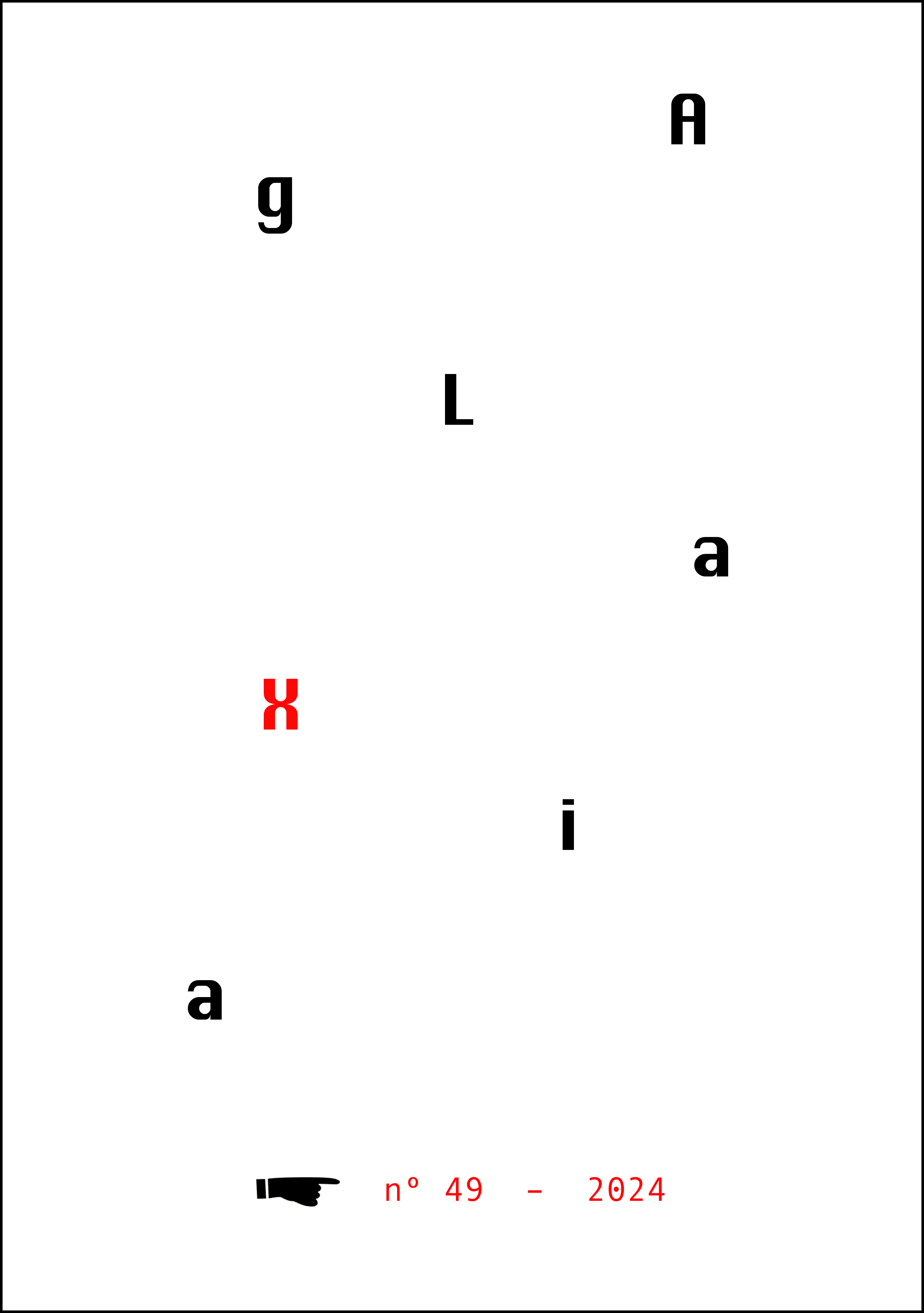Live Interactional Practices in Digital Platforms
A Case Study of CNN Brazil on YouTube
Keywords:
live television broadcast, interactional practices, sentiment analysis, sociosemioticsAbstract
The aim of this study was to examine interactional practices in live broadcasts in digital platforms. The corpus consisted of collected comments from the chat of CNN’s live stream on YouTube during the Bolsonaro supporter’s demonstration on February 25, 2024, at Avenida Paulista. After a quantitative collection, approximately 14 thousand comments made during the two-hour broadcast were analyzed using sentiment analysis methodology. Subsequently, based on Sociossemiotics, the interactional practices performed by the participants were identified. As a result, it was observed that the polarization between supporters of Lula and Bolsonaro is expressed by the alternation of sentiments, reflecting a regime of regularity and intentionality; The association of sentiment analysis with a sociosemiotic approach proved fruitful, prompting further studies from this combination.
References
ANGELUCI, Alan César Belo; CALIXTO, Gustavo Moreira; BEVILAQUA, Leire Mara; BERNARDINI, Gleice; GOBBI, Maria Cristina. QRcode, hashtag or audio watermark? A case study on second screening. Multimedia Tools and Applications, v. 76, p. 7519-7534, 2017.
BOBÓ, Míria; CAMPOS, Fernanda; STROELE, Victor; BRAGA, Regina; DAVID, José. Análise de sentimento na educação: Um mapeamento sistemático da literatura. In: Brazilian Symposium on Computers in Education n . 2019. p. 249.
BRITTO, Larissa Feliciana da Silva; PESSOA, Luís Augusto de Sá; AGOSTINHO, Silvania Cristina Caetano. Cross-domain sentiment analysis in portuguese using bert. In: Encontro Nacional de Inteligência Artificial e Computacional (ENIAC). SBC, 2022. p. 61-72.
CALIXTO, Gustavo Moreira; ANGELUCI, Alan César Belo; KURASHIMA, Celso; DEUS LOPES, Roseli de; ZUFFO, Marcelo Knörich. Effectiveness analysis of audio watermark tags for IPTV second screen applications and synchronization. In: 2014 International Telecommunications Symposium (ITS). IEEE, 2014. p. 1-5.
CALDAS, Carlos Henrique Sabino; CARMO, Monielly Barbosa do. Estratégias multiplataformas na comunicação televisual: estudo de caso dos telejornais da Rede Globo. Revista GEMInIS, [S. l.], v. 11, n. 1, p. 65-87, 2020.
CALDAS, Carlos Henrique Sabino. Práticas Interacionais em Audiovisuais Educativos no canal da Univesp TV no Youtube In: ENCONTRO ANUAL DA COMPÓS, São Paulo. 32° Encontro Anual da COMPÓS. Campinas: Galoá, 2023. v.32.
ECO, Umberto. Apocalípticos e integrados. 6. ed. São Paulo: Perspectiva, 2006.
FECHINE, Yvana. Tendências, usos e efeitos da transmissão direta no telejornal. In: DUARTE, Elizabeth Bastos; CASTRO, Maria Lília Dias de (Orgs.). Televisão: entre a academia e o mercado. Porto Alegre: Sulina, 2006.
GOMES, Fernanda; SILVA, Edeilson; TEIXEIRA, Irenides; DE BRITO, Parcilene. Análise de Sentimentos: Uma Revisão Sistemática. In: ENCOINFO-Congresso de Computação e Tecnologias da Informação. ENCOINFO, 2017. p. 24-32.
GUO, Jiajing; FUSSELL, Susan. A preliminary study of emotional contagion in live streaming. In: Companion Publication of the 2020 Conference on Computer Supported Cooperative Work and Social Computing. [S.l.: s.n.], 2020. p. 263-268.
JENKINS, Henry. Cultura da convergência. 2. ed. São Paulo: Aleph, 2008.
LANDOWSKI, Eric. Interações Arriscadas. São Paulo: Estação das Letras e Cores, 2014.
MACHADO, Arlindo. A televisão levada a sério. 5. ed. São Paulo: Senac São Paulo, 2009.
MANOVICH, Lev. Cultural analytics. Cambridge: MIT Press, 2020.
RAVICHANDIRAN, Sudharsan. Getting Started with Google BERT: Build and train stateof-the-art natural language processing models using BERT. Birmingham: Packt Publishing Ltd, 2021.
RECUERO, Raquel. Introdução à análise de redes sociais online. Salvador: EDUFBA, 2017.
ROGERS, Richard. Digital methods. Cambridge: MIT Press, 2013.
ROGERS, Richard. Doing digital methods. London: SAGE Publications Limited, 2024.
SCOLARI, Carlos Alberto. Hipermediaciones: elementos para uma Teoría de Comunicación Digital Interactiva. Barcelona: Gedisa Editorial, 2008.
SCOLARI, Carlos Alberto. Transmedia Storytelling: Implicit Consumers, Narrative Worlds, and Branding in Contemporary Media Production. International Journal of Communication, n.3, 2009.
SILVA, Nadia Felix Felipe da. Análise de sentimentos em textos curtos provenientes de redes sociais. 2016. Tese (Doutorado em Ciências da Computação). Universidade de São Paulo, São Paulo, 2016.
SRNICEK, Nick. The challenges of platform capitalism: Understanding the logic of a new business model. Juncture, v. 23, n. 4, p. 254-257, 2017.
VAN DIJCK, José; POELL, Thomas.; DE WAAL, Martijn. The platform society: Public values in a connective world. Oxford: Oxford University Press, 2018.
WANG, Mengdi; LI, Dong. What motivates audience comments on live streaming platforms? Plos one, v. 15, n. 4, p. e0231255, 2020.
YOUSUKKEE, Sawita; WISITPONGPHAN, Nawaporn. Analysis of spammers’ behavior on a live streaming chat. IAES International Journal of Artificial Intelligence, v. 10, n. 1, p. 139, 2021.
Downloads
Published
How to Cite
Issue
Section
License
Copyright (c) 2024 Galaxia

This work is licensed under a Creative Commons Attribution 4.0 International License.
I cede the copyrights to publication of my article to Galaxia journal and will consult the journal’s scientific editor should I decide to republish it later in a book.



 Este obra está licenciada com uma Licença
Este obra está licenciada com uma Licença 